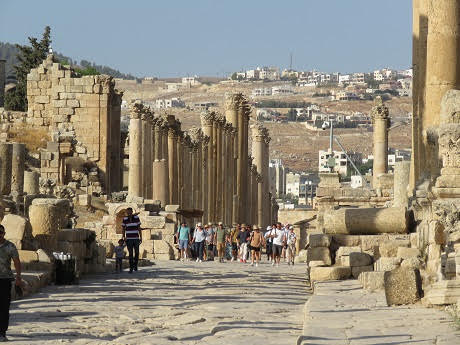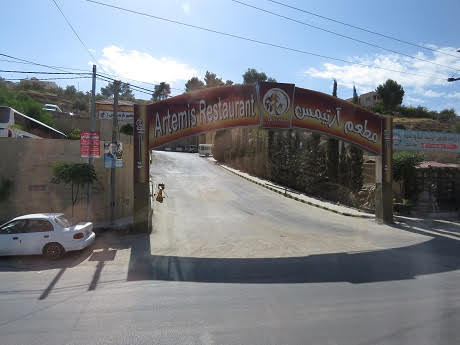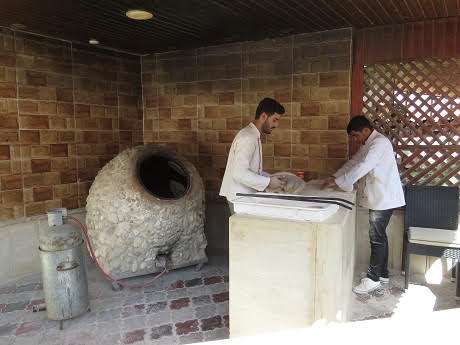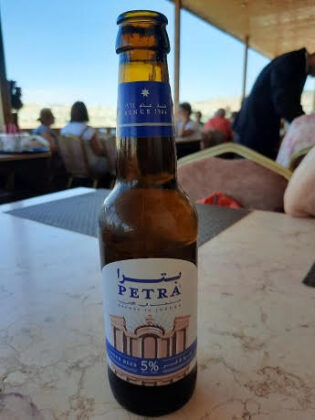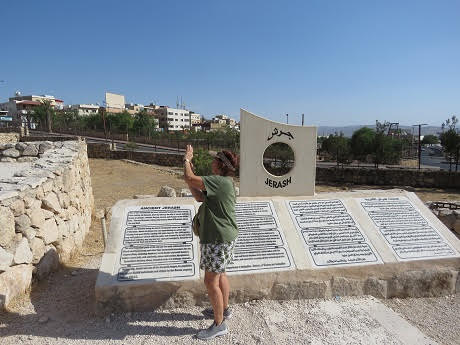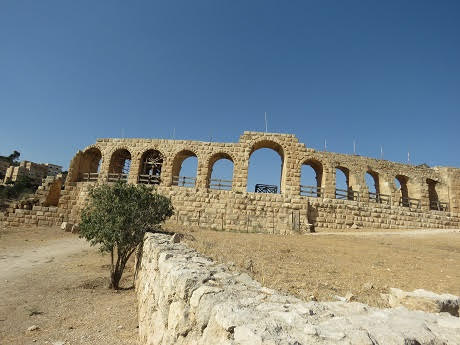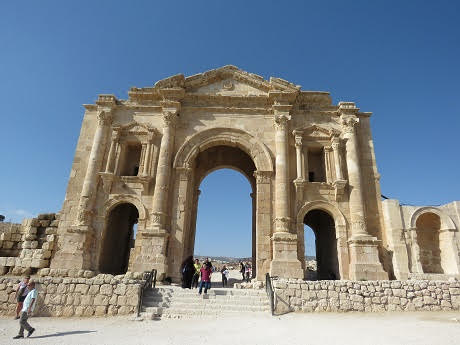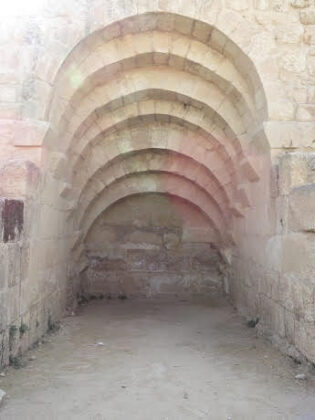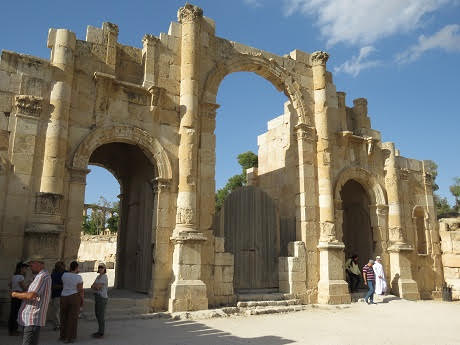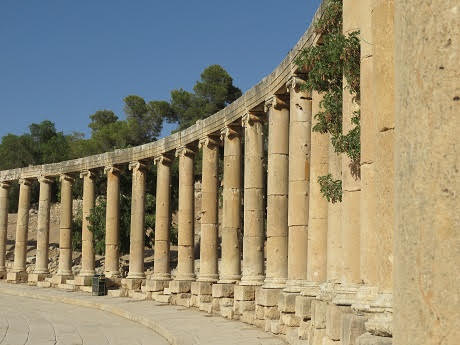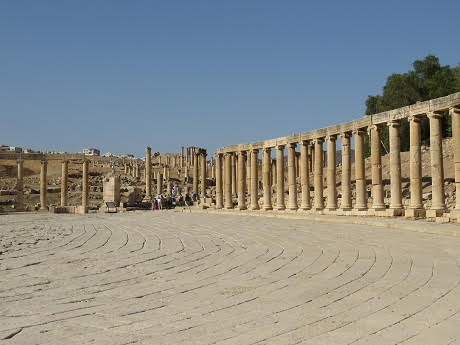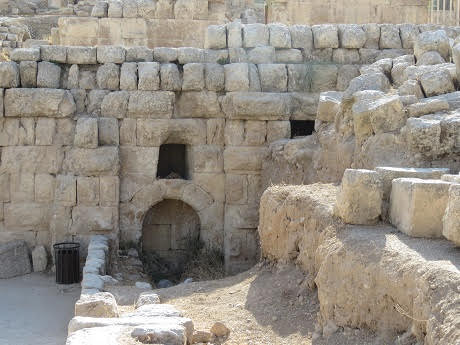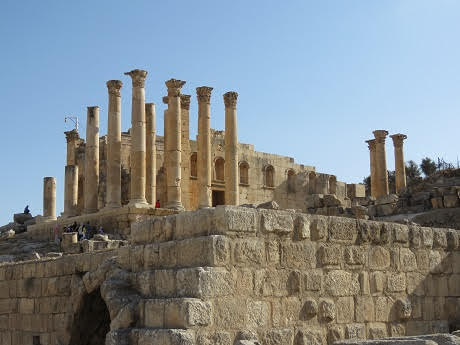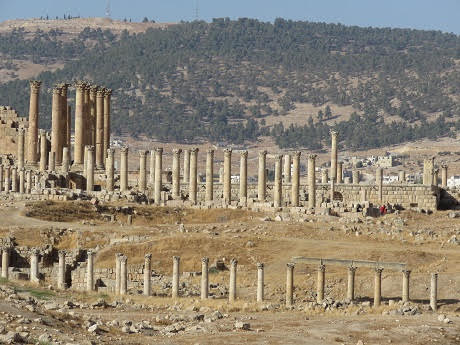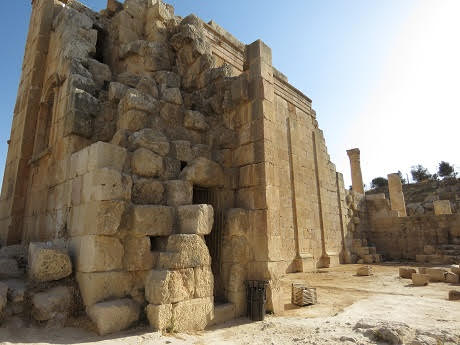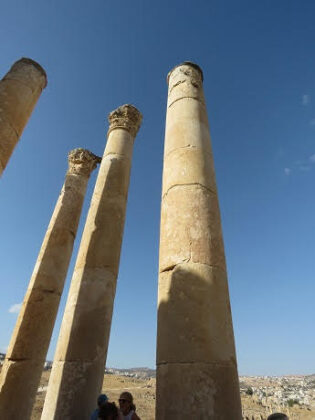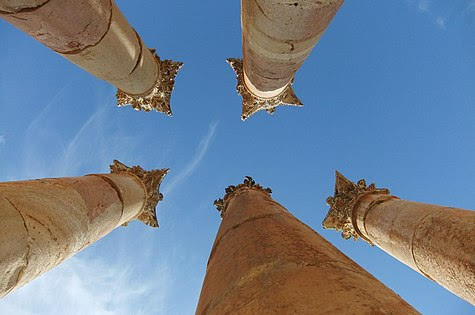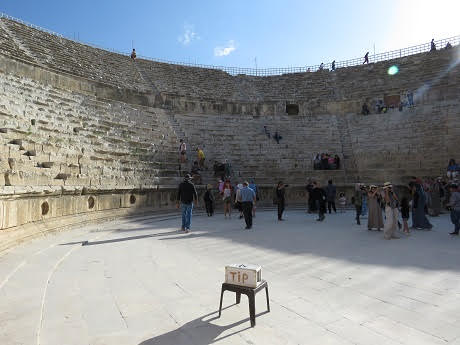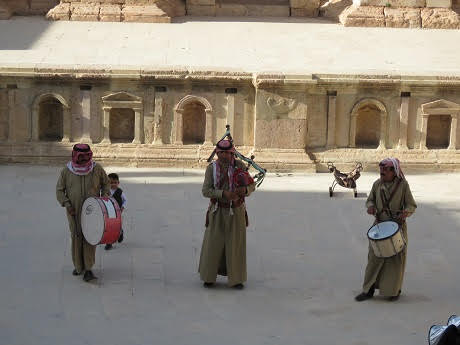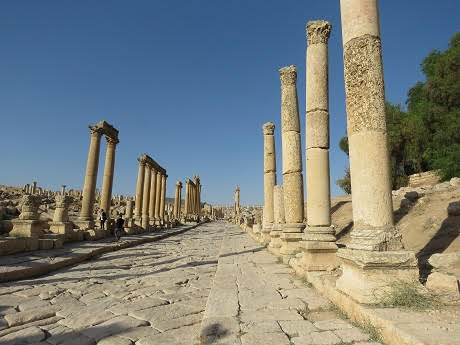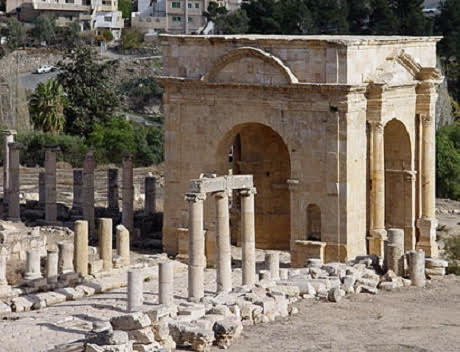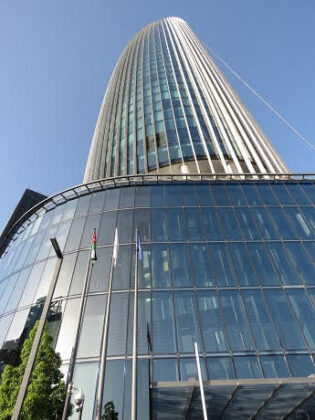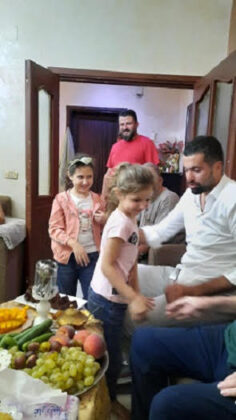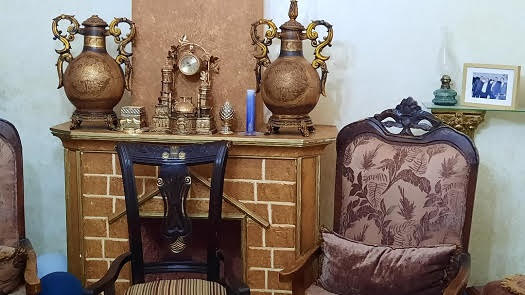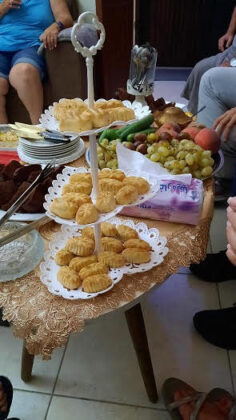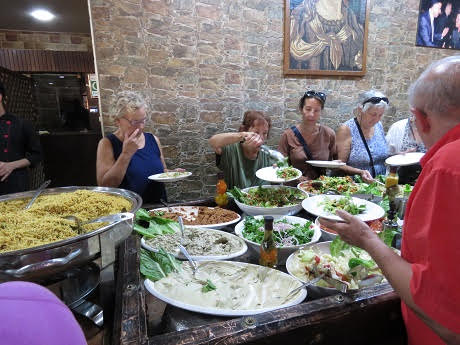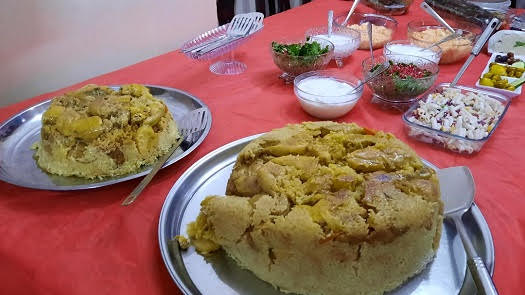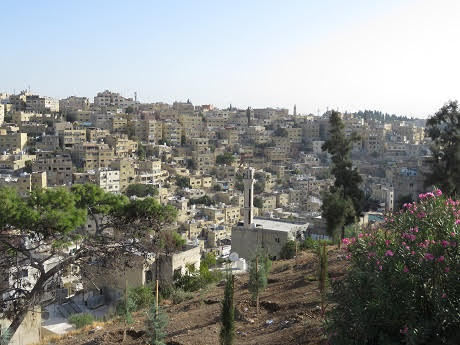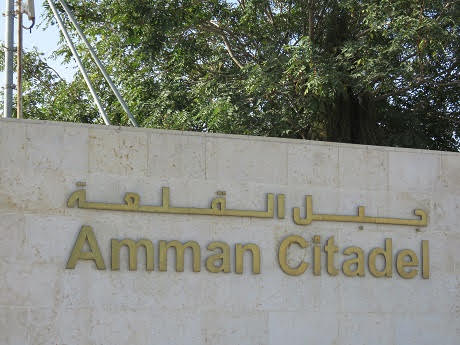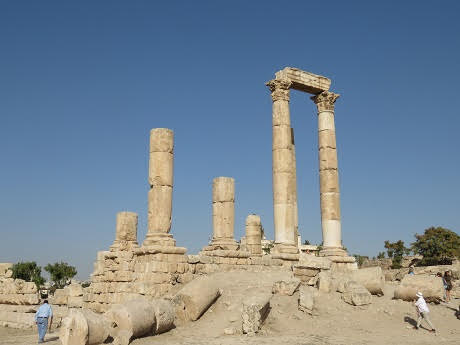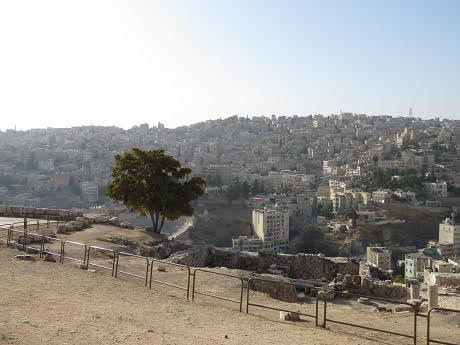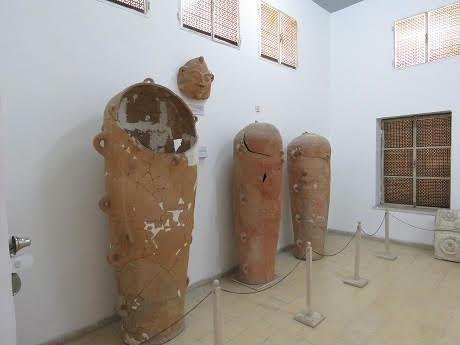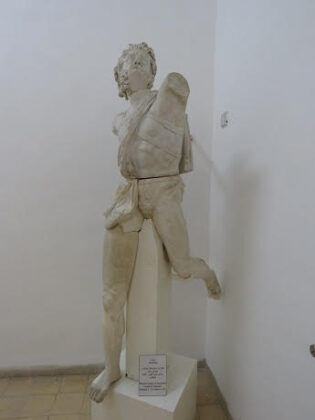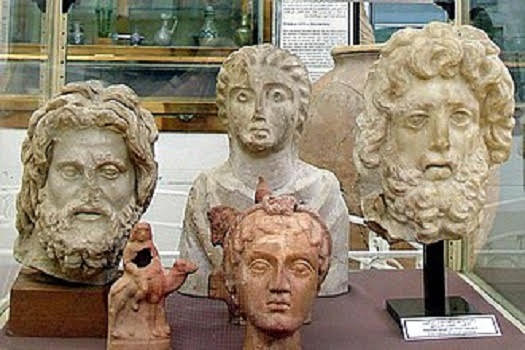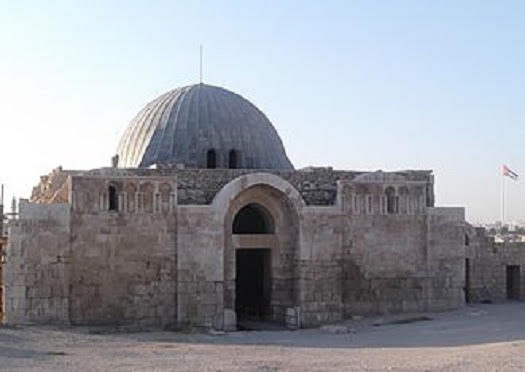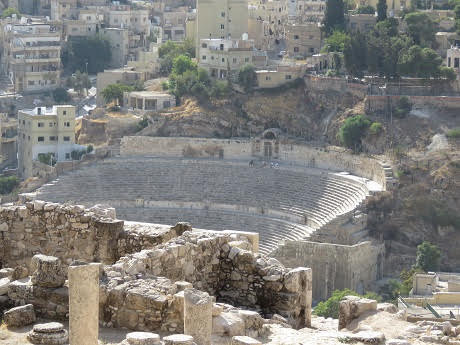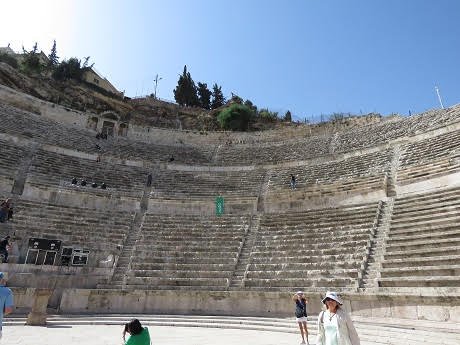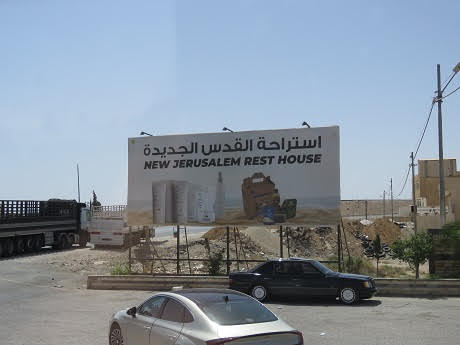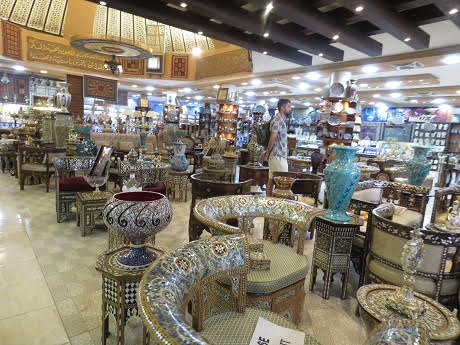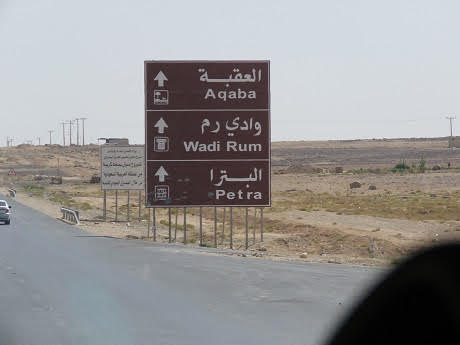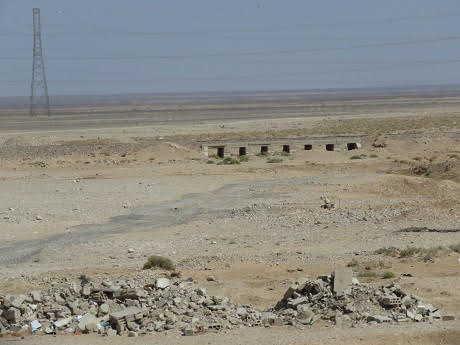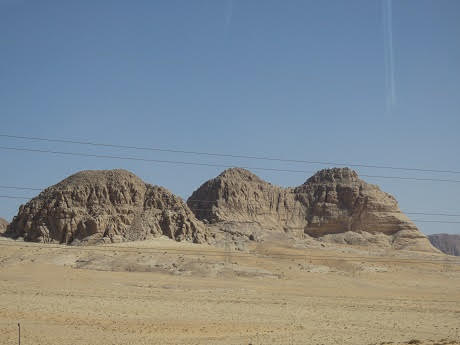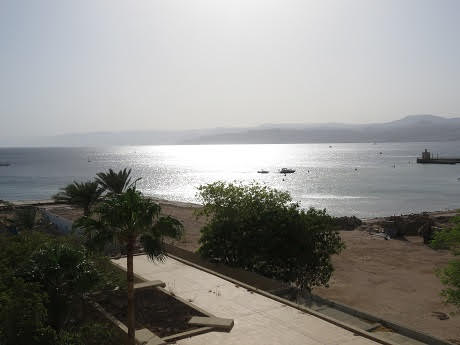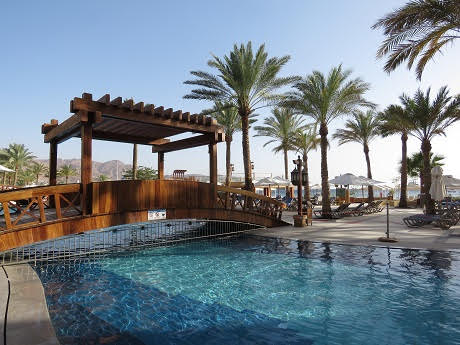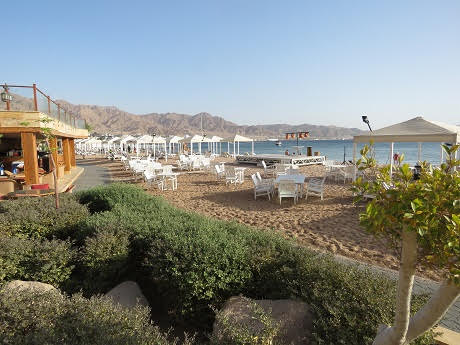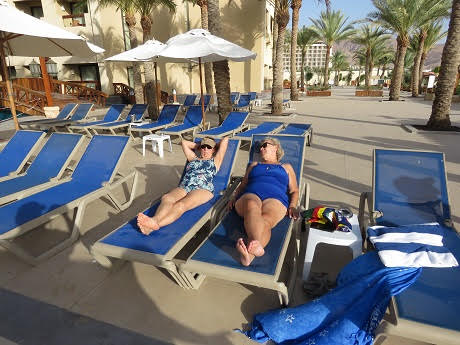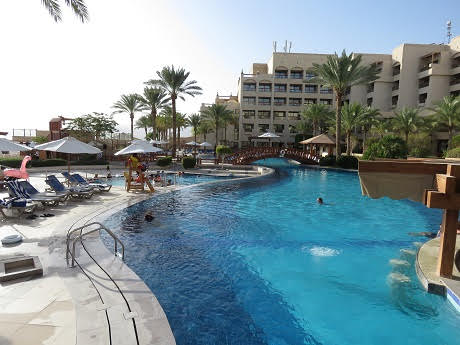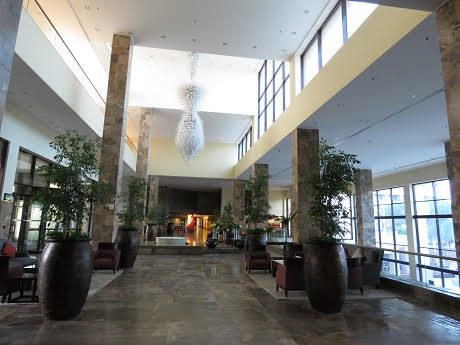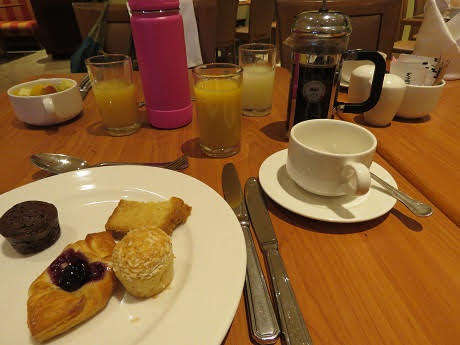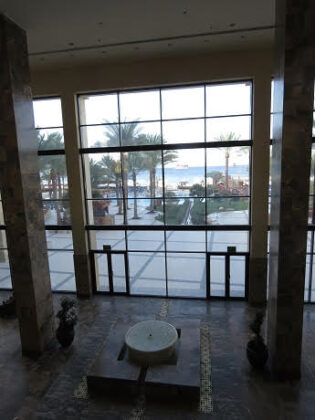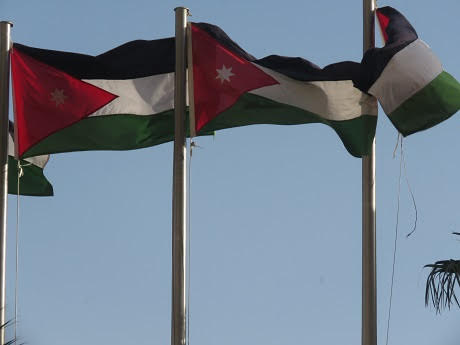Entering Jordan – Jerash – a Visit to a Jordanian Home – Arrival in Aqaba
By TR Robertson
As we awoke on Day 7 of our Mid-East trip, we would be leaving Israel and heading into Jordan. Packing the evening before, our group made sure luggage was on the bus as we boarded after a morning breakfast. On the road for about an hour we approached the border crossing where we would have to be stamped out of Israel and stamped into Jordan.
We had to take our luggage out of the bus, as we would be getting on a new tour bus in Jordan with our new guide from Jordan. There was a small crowd of people also trying to enter Jordan, but our guide Farah assisted in getting us the proper paperwork to go through the gate. A soldier entered the bus to check our passports. Entering the building to get the entry pass to enter Jordan several in the group had an issue getting the VAT tax (Value Added Tax) returned from items purchased in Israel. There was a delay in getting someone from Israel to issue the money return from items purchased in Israel and an issue with the procedure used by Israel for returning the tax. After waiting to get someone from Israel to assist, all in the group made it through the entry process, rVat tax in hand. We retrieved our luggage and took everything to the new bus to officially meet our new guide, Ridwan Al Smadi. Ridwan informed us the best way to remember his name was to call him “Red Wine”, which many would do for our stay in Jordan.
Finally on the road again, our bus was headed to the Jordanian capital of Amman, the largest city in Jordan. Ridwan told us a little about himself, mainly he had been a tour guide for over 6 years and loved what he was doing. We also learned a little about what we would be seeing in the city of Jerash, our first stop before we arrived in Amman. Human presence in this area dates back to the Neolithic Period (7,000-5,000 BC). Jerash and the ruins in the area are referred to as the Pompeii of the Middle East and the City of 1,000 Columns. Romans conquered this area in 63 BC and began to build a massive Greco-Roman city. The ruins today are considered the best preserved Roman ruins outside of Italy.
Before arriving at Jerash we stopped for lunch at the popular restaurant called Artemis. Artemis was the Greek god of fertility and the hunt. Many of our group got the chicken kabobs for lunch. I wanted to try their crispy Nan bread with hummus and wanted a Jordanian beer called Petra, enough to fill me until dinner. The lunch stop was a great introduction to Jordan. We were back on the bus after about an hour and headed for the Greco-Roman ruins of Jerash.
After entering the entrance complex for the ruins, we headed to the impressive Hadrian’s Arch at the East Gate entrance, built in AD 171, which led to a long procession of buildings that ended at a huge central courtyard. The city was partially destroyed in AD 749 by a massive earthquake. A portion of the courtyard is beautifully framed by large columns that circle the courtyard. Many followed Ridwan as he talked about the complex using “Whispers”, listening devices we had been using at different spots during our trip. We were told that only 20% of the large city complex has been excavated. We saw a portion of the Hippodrome complex which at one time was over 853 feet in length. Several in our group went to the amphitheater where we were treated to an unusual musical event. Three Jordanian gentlemen, playing snare drums and bagpipes, entertained those in the amphitheater as they performed different songs as they marched around the area, including Happy Birthday to one of the ladies in our group. Ridwan continued on ahead with some of the group, I chose to go back down to the main plaza and walk down the road of columns toward the West Gate entrance, before returning to the entrance area where some of our group had wandered to enjoy sodas and gelato on another warm day in the Mid-East. When all of the group wandered back to this meeting point, it was back on the bus headed to our hotel in Amman for a one night stay before moving on to the coastal city of Aqaba.
Our hotel in Amman was the beautiful five-star Amman Rotana, a hotel many of us wished we could have stayed at an additional night. Our rooms were huge with wonderful views of the city through floor to ceiling windows. After some time to relax and get ready dinner we met our tour guide in the lobby to join other members of our group to drive to a Jordanian home where we would be hosted for a home cooked meal. Arriving and going up several flights of stairs we arrived at a very nice apartment owned by an older couple who also lived with their sons and their families in the apartment complex. Our hosts welcomed us and we met various family members and shared a lively discussion where Ridwan explained a little about Islam and the customs and beliefs surrounding this religion. Dinner for this evening was the Maqluba upside-down chicken dish with lots of side dishes, very tasty. A great selection of desserts were available for after dinner treats. We had to leave before 10 pm as we were told power to the building shut down at 10 pm. We were back on the bus for an evening drive back to the Amman Rotana.
The next morning, after luggage down to the lobby and breakfast in an amazing restaurant of the hotel, we were on the bus for several hours of driving through the Jordanian desert to Aqaba, located on the Red Sea. Before leaving Amman we toured the Citadel of Amman, built on Jebel Al Qala’a hill, with a 360 degree view of the Old City. We toured the ruins of this fortress, a place that had been conquered many times in the past by numerous civilizations. The two major sites to see included the incomplete Roman Temple of Hercules and the Ummayad Palace. Many of the group visited the small museum at the top of the hill, before returning to the buses. Leaving this area, we made a quick stop at the large 2nd century Roman amphitheater that once sat over 6,000 people.
Departing Amman, after several hours on the Kings Highway we stopped for a quick lunch at the New Jerusalem Rest House, which also had a very elaborate gift shop with beautifully designed rugs, furniture, jewelry, gift items and some very unusual items like painted ostrich eggs. For lunch, they offered a hamburger which was actually more like beef sausage on a roll or a kebab sandwich, which seemed to be the same but thicker. We were about an hour away from Aqaba, so after lunch we boarded our tour bus to get to the city just after mid-day. Ridwan told us that 125 years ago the Ottoman empire built a railroad system to take pilgrims to Mecca. This could be seen in the distance from the road. He also said that every 12-15 miles a small town would be established with water towers to supply water for the steam trains. The trains also hauled phosphate that was mined in the hills throughout the region.
As we arrived at the hills above Aqaba (translated as “obstacle”), we could get a great overview of this coastal town and could see the Red Sea in the distance. It was very hazy and once we got out of the bus at the hotel there was a very warm breeze blowing. In Aqaba we were staying at the Intercontinental Aqaba Hotel, another beautiful hotel we stayed in on this trip. For the rest of the day we were able to relax and have no additional plans for the evening.
The next two days would be busy with a trip to the Wadi Rum desert, a boat ride on the Red Sea, and a tour of the ancient rock city of Petra. These adventures will be covered in Part 6 of our Mid-East Adventures.


